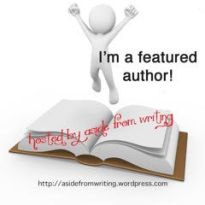
It’s been a week with a topic that was more difficult than I expected. You would think doing a physical description is basic and easy. It’s part of a foundation for a character and a story when your goal is to create an image in the reader’s head. Everyone has their own opinion and strategy. So, let’s not beat around the bush and end the week by opening the floor:
- How important is physical description to you as an author?
- What tip would you have for a new author struggling with this?
- What is the funniest thing you’ve done with a physical description? (This can be accidental or on purpose. For me, it would be the switching eye color on Luke Callindor.)





1. How important is physical description to you as an author?
It’s important, but I don’t usually include minute details. Maybe I should, but I don’t. Writing description is not a strength of mine.
2. What tip would you have for a new author struggling with this?
Keep a chart of each character’s hair and eye color. Also, whenever you can, use actions to convey descriptive information. “The wind made a pennant of her red hair.”
3. What is the funniest thing you’ve done with a physical description? (This can be accidental or on purpose. For me, it would be the switching eye color on Luke Callindor.)
I’ve definitely switched eye colors, especially the characters with Heterochromia iridis I get mixed up a ton with that! “Now which eye is the green eye? The left? The right? Arrrggghhh.”
LikeLiked by 2 people
1. Curious what you consider minute details. I wonder if it differs from author to author.
2. Great advice.
3. I can only imagine the frustration of that problem. Did you ever find a way to make it easier?
LikeLiked by 1 person
Like exact height and weight, facial shapes (heart shaped is a description I see a lot in books)–that sort of thing. I might go into greater detail if it has a bearing on the plot (like a character who is scarred for a reason).
Keeping a hair color and eye color chart was helpful. I could refer back to that each time.
LikeLike
I don’t go that far unless the scene calls for it. I never heard of the heart-shaped face though. Can’t really imagine that either.
LikeLike
Reblogged this on Chris The Story Reading Ape's Blog and commented:
Please call over to Charles’ original blog post and leave your advice in the comments under it 😎
LikeLike
Thanks for sharing. This one didn’t do as well as others. Dull topic probably.
LikeLiked by 1 person
Not dull at all, Charles 😃
LikeLike
Thanks.
LikeLiked by 1 person
Physical description is important for a character, but I think it’s far more important to describe what kind of person they are, by their thoughts and actions, of course…
LikeLike
I think both are important. To create a clear picture in a reader’s mind, you need some type of physical description. The thoughts and actions are what drive the story, but most people won’t connect fully without some description. Especially if you then do an adaptation because you’ll have everyone with a different picture in their head, so those who aren’t close will feel slightly ostracized.
LikeLiked by 1 person
My desire is to keep physical description to a minimum, unless the story requires it. I have a character with horrible teeth in one of my upcoming books. There has to be some description for that. I think readers can imagine more if we just give them a few points. In a way, that’s my tip, too. Some new authors stop all momentum and describe from shoelaces to barrette for two pages. I can’t think of a funny stand-out event. I regularly have to go back to my notes for some side characters.
LikeLike
I’ve seen new authors go to both extremes. Overly descriptive in the middle of something instead of to set a scene or doing absolutely nothing. You’re right that some direction should be given if we want to create a specific picture. Tattoos, gnarled teeth, scars, unique hair colors, and the like should be mentioned in some fashion.
LikeLiked by 1 person
And mentioned early. I saw one once where the main character description didn’t happen until a few chapters in and it broke the visual I had created in my mind.
LikeLike
That’s gotta be awkward. Best to do that either right away or subtly spread throughout the story.
LikeLiked by 1 person
In description, either of setting or character, you should try to work in double meanings if you can. The clothing or hair style might tell us about social affiliations, for instance. The way someone acts can foreshadow events. For instance, a smirk instead of a genuine smile might tip the reader that this character has a hidden agenda.
LikeLike
Good points.
LikeLike
Pingback: The Legends Of Windemere – Charles Yallowitz – Physical Description Posts – Writer's Treasure Chest